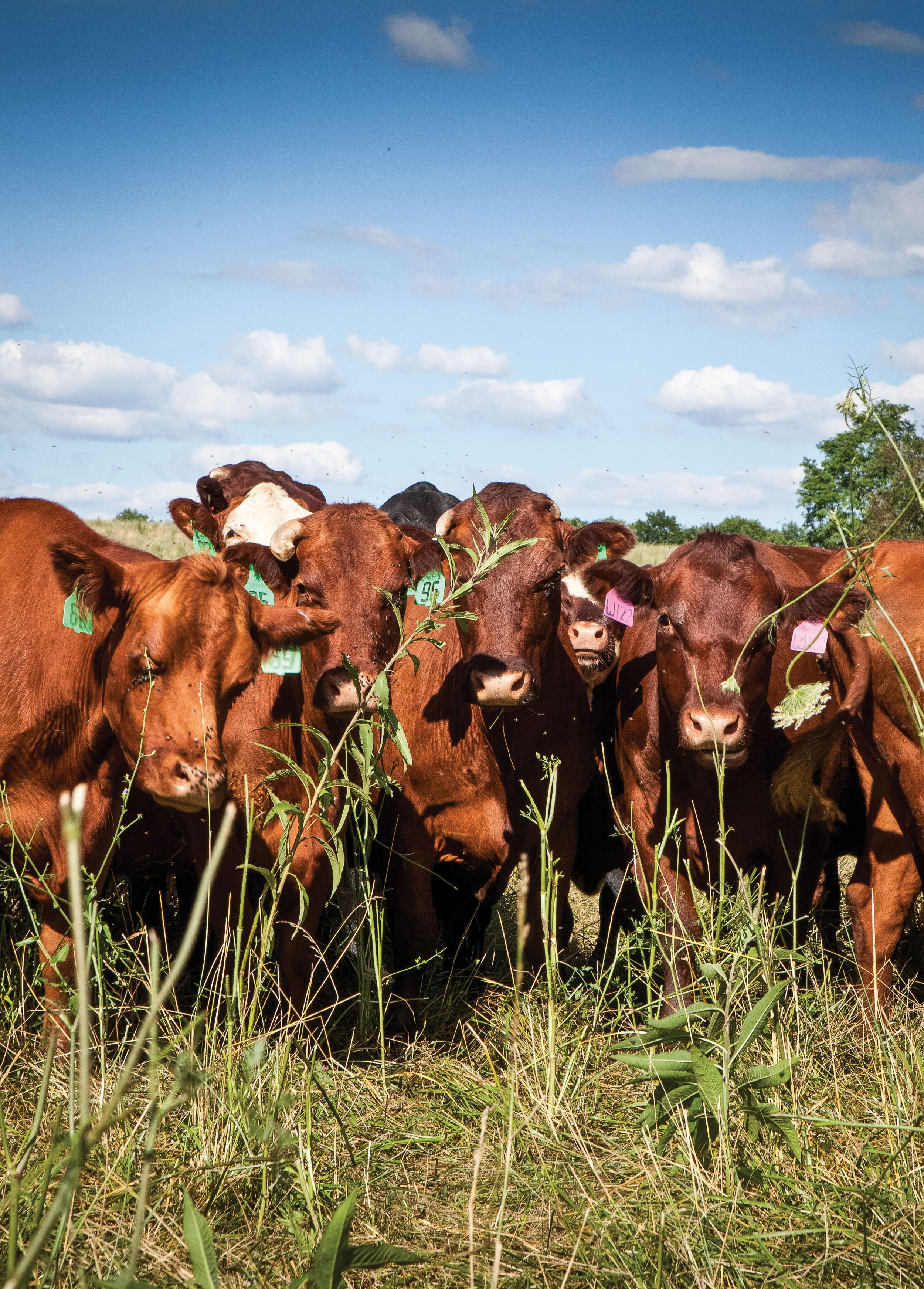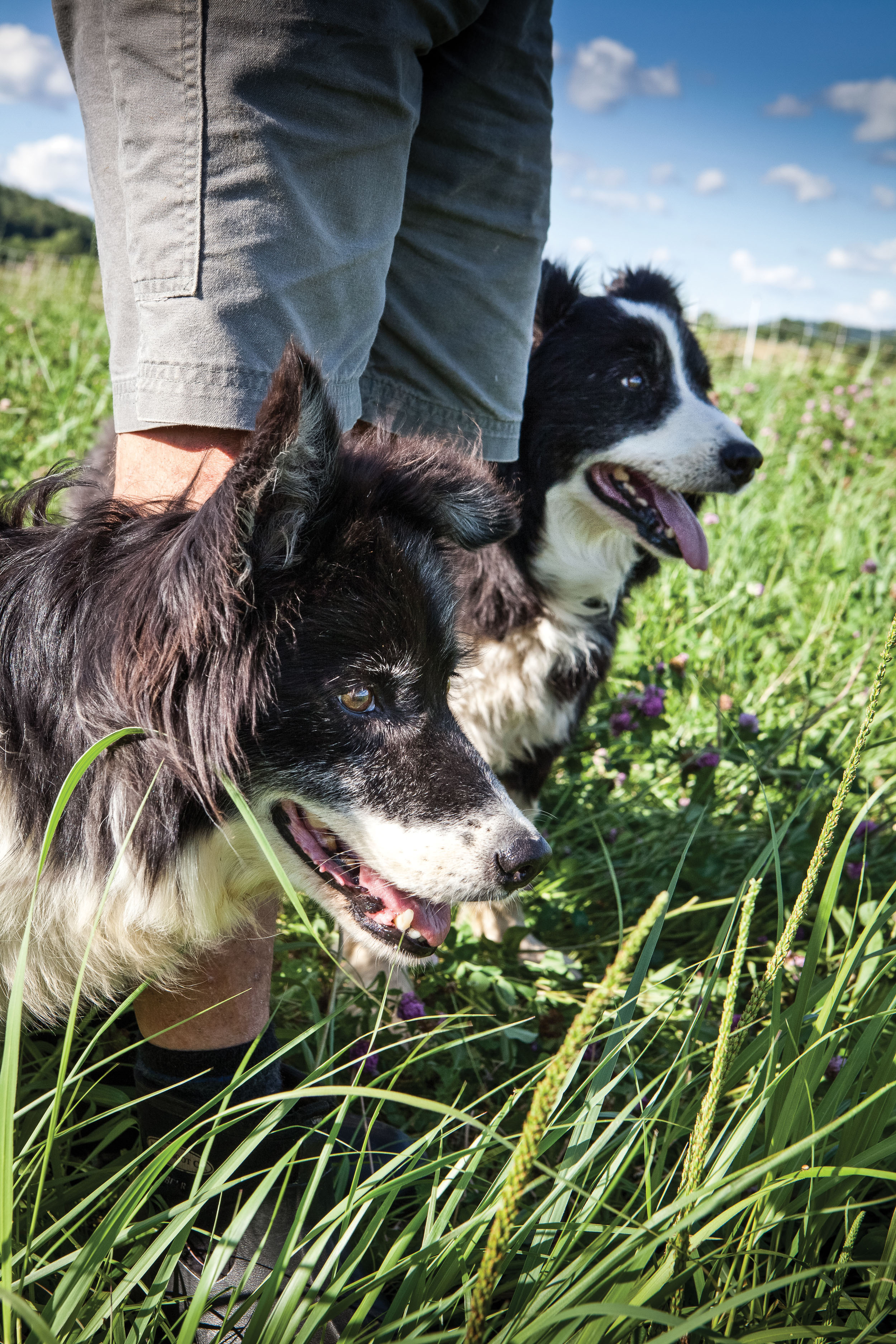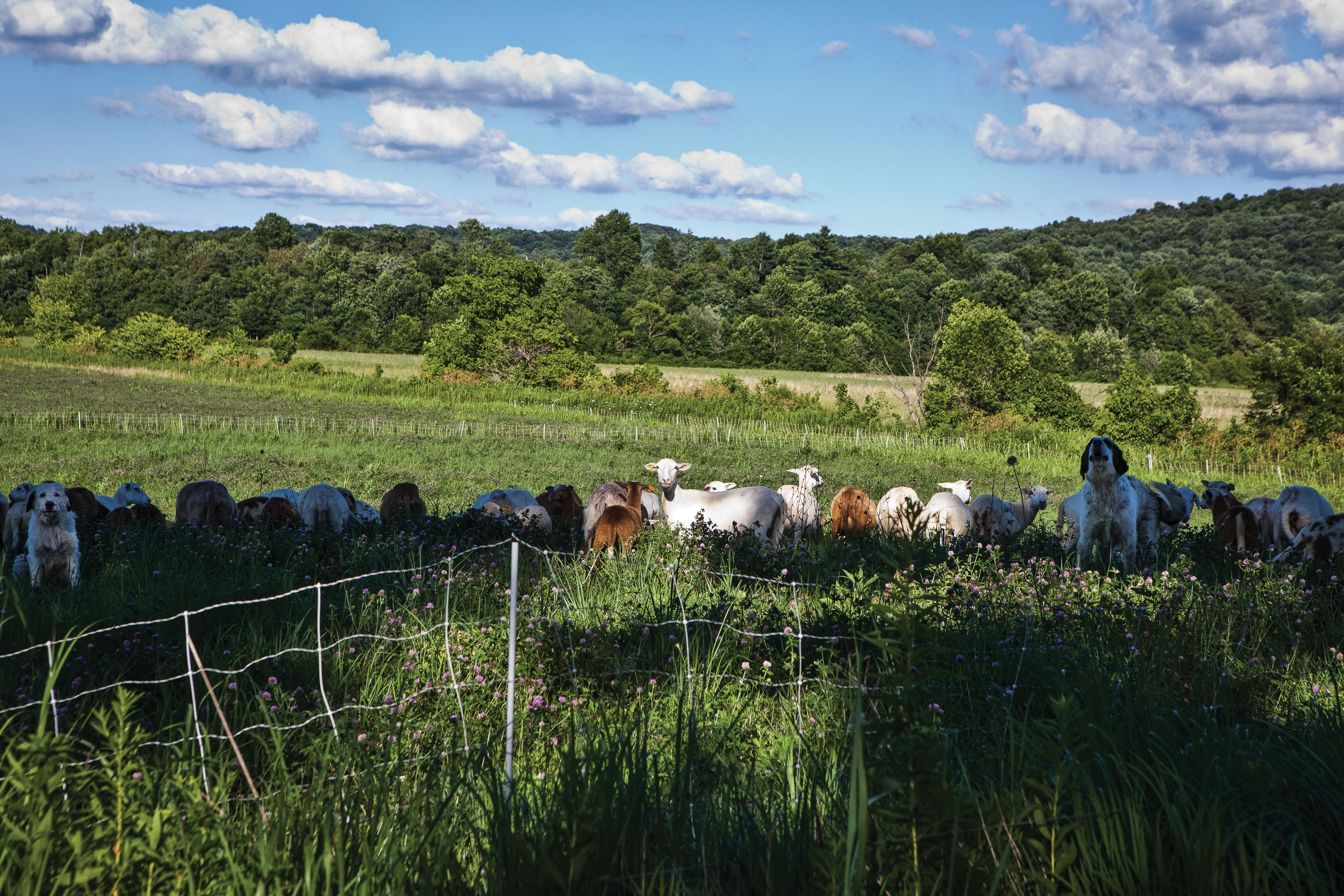The Fading Joe-Pye Weed

One Farmer’s Almanac
SEPTEMBER 2014
photographs by Drausin Wulsin and Sebastien Hue
This beautiful wildflower has been in bloom for the past month in wet areas of the farm. As it now fades, we are invited to review the summer and prepare for the fall.
Perhaps the most significant aspect of the summer for us is that it brought us laying hens and meat chickens. The last time the farm saw poultry of any sort was probably 50 years ago, so this venture represents a new learning curve.
Like many worthwhile ventures, if one knew everything there is to know about it before commencing, one would rarely commence anything! I thought I understood the importance of closing the trap door of the eggmobile at night, until the night I forgot. The next morning I found 11 dead chickens in the field. We also thought hens would naturally lay eggs in the hen house, until we discovered eggs in nests under trees and behind boards hundreds of yards away. We have since erected poultry netting to keep the hens closer to home.
One of the other lessons we learned this summer is that many people do not know how to cook or carve a whole chicken. We didn’t anticipate this, but it is reasonable, in that one of the efficiencies of the industrial food system is just-in-time inventory generating perfectly redundant and tasteless cuts of meat. For many people, chicken consists of skinless breasts and thighs. But there is so much more to the bird and to the meal it can provide.
Let’s begin with a whole 6-pound chicken, with neck intact, unlike anything you’d find at Kroger. This chicken has eaten the best food, lived a healthy life, and been cared for by interested and able stewards. This chicken cannot be found in supermarkets, but only at farms like ours, where hand-raised food is fostered.
Now we have to cook it. There are numerous methods, so I will share our preferred one: Roasting at 450° for 25 minutes, then at 350° for 45 minutes. This roasted bird is delicious: moist and firm. The best part is the drippings in the pan, slurped off a wide spoon, so clean and flavorful, like poultry nectar.
The first step to carving a chicken is to remove the second joint and drumstick, pulling the joint down with a fork and cutting the exposed joint through with a knife. The same needs to be done for the wing. Then one is ready to slice the breast.
These are not fatty birds, because of their constant activity outdoors. But the fat that is on them is delicious and digestible. The tail is fatty and has great flavor, as does the back. The second joint is always flavorful, and breast meat is a favorite. One chicken should serve four people generously. Once the carcass has been picked clean, it can be used for making stock.
The bottom line is: Don’t be afraid of a whole chicken! It has been a staple of productive kitchens for hundreds, if not thousands, of years. It can be a staple of yours as well.
As the bloom of the Joe-Pye Weed fades and the advent of Labor Day dawns, we urge you to claim this food that is yours.
Your partners,
Susan & Drausin
Drausin has been the chief-cook and bottle washer at Grassroots Farm & Foods since 2008, when he chose to become a full-time grass farmer, leaving his job as a banker to do so. He and his wife, Susan, lease 200 acres at Red Stone Farm in Pike County, which has been in the John Wulsin family since 1968. In addition to grassfed meats, the farm offers prepared foods like chili and Bolognese sauce made by Susan’s Soulful Kitchen.






